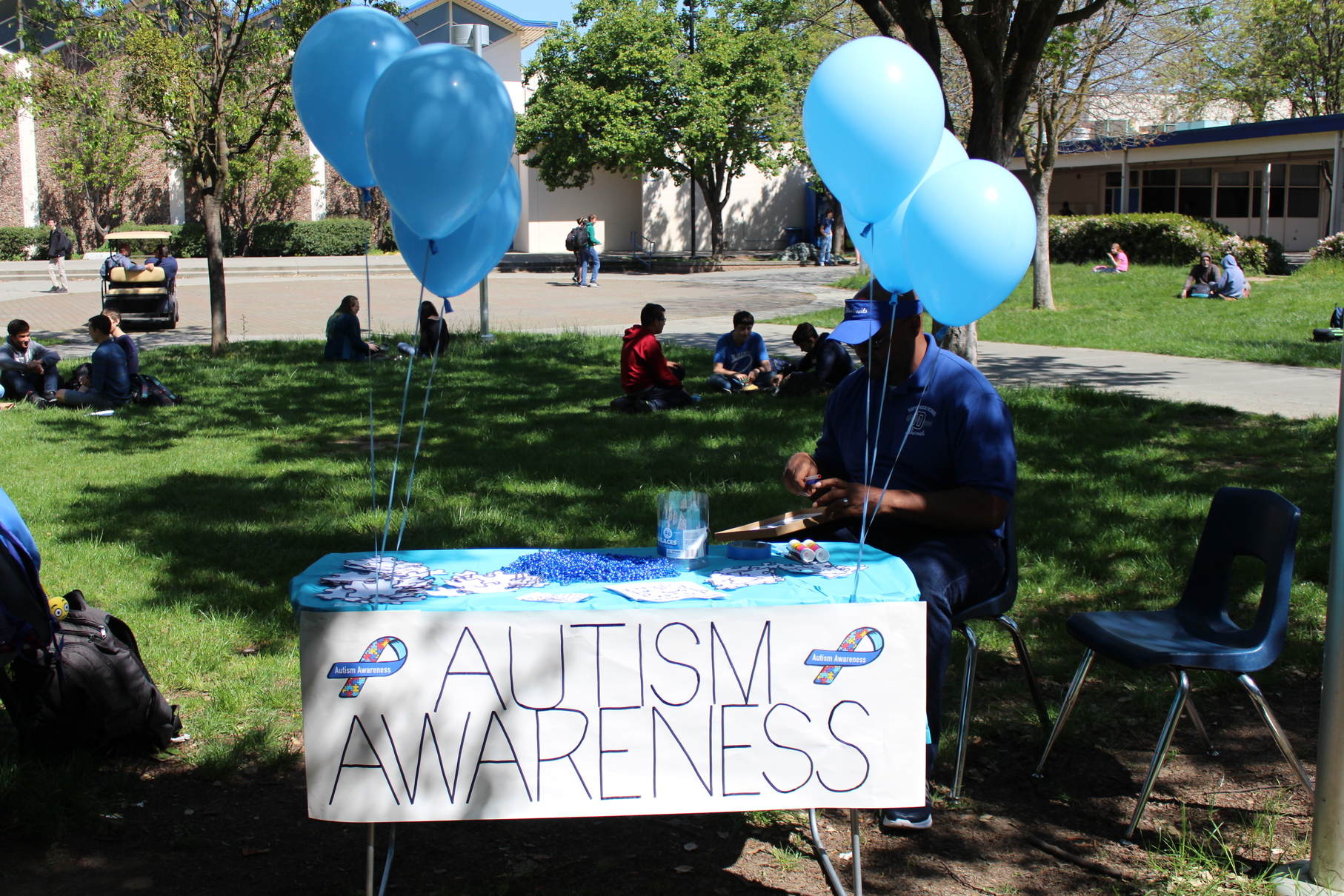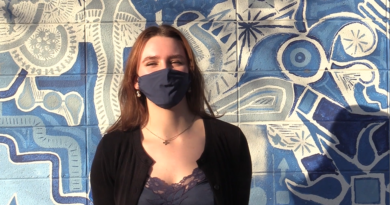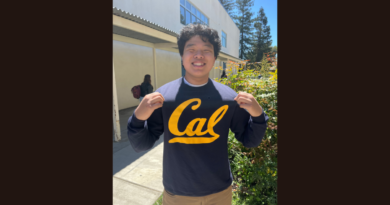The puzzle piece that doesn’t fit: autism
By Meghan Bobrowsky,
BlueDevilHUB.com Editor–
Google defines autism as “a mental condition, present from early childhood, characterized by difficulty in communicating and forming relationships with other people.” The behavioral disorder, also known as Autism Spectrum Disorder (ASD), is different for every affected person, and therefore difficult to define in great detail.
Because of the range of severity, people worldwide lack a clear understanding of the developmental disorder. As a result, April has become Autism Awareness Month, and in 2007, the United Nations proclaimed April 2 World Autism Awareness Day (WAAD).
WAAD was celebrated at Davis High on Friday with a puzzle piece coloring activity in the quad during lunchtime. Students gathered to create their own puzzle piece and tape it to a poster board with other pieces. The posters will be hung in the hallways early next week.
DHS inclusion leader Leti Vasquez works with a variety of students and helped run the event.
“I’m hoping to at least share with students as they come and make puzzle pieces that the puzzle symbolizes that autism is really puzzling. And when people say, ‘What is autism?’ you really can’t answer it because it’s so different for every student that has it,” Vasquez said.
Autism Speaks, an autism advocacy organization based in New York, has been encouraging people worldwide to “shine a light on autism” by dressing in all blue on the designated day since 2005.
According to the organization’s website, countries throughout Europe, Asia and South America have shown their support by lighting up famous landmarks, such as the Israeli Parliament Building in Jerusalem, the Panama Canal and the Great Buddha of Hyogo in Kobe, Japan.
President Barack Obama recognized WAAD this year and shared his aspirations for the future.
“Today, and every day, let us reach for a future in which no person living on the autism spectrum is limited by anything but the size of their dreams‑‑one in which all people have the opportunity to live a life filled with a sense of identity, purpose and self-determination,” Obama said in a White House press release.
According to the Centers for Disease Control and Prevention (CDC), approximately one in every 68 American children has been identified with some form of ASD; an estimated two million individuals are affected by ASD in the United States alone.
Sophomore Steven Derby puts a face to those statistics.
The ASD-diagnosed 15-year-old described a day in his life: “Most days it’s like having a good time, and then it gets down a bit,” Derby said. “Then, I can get angry at some point, but thanks to the medications, I’ve been a little better.”
The National Institute of Mental Health (NIMH) describes someone with ASD as “having ongoing social problems that include difficulty communicating and interacting with others.”
Derby understands it’s not always easy to interact with kids with disabilities, but he wants to spread a message.
“For all you people out there, give people with mental disabilities a chance. Give them hope. Give them something for them to look after and reach out for,” Derby said.
Senior Sadie Brown followed Derby’s advice and found herself with many new friends.
“[Teenagers with autism] have lots of different things to say, and they think many different things that are interesting that you wouldn’t think of or expect,” Brown said.
And while ASD isn’t fatal, there is no “cure.” According to NIMH, there are no known causes of ASD. However, research hints that genes and environment are important factors.
NIMH also says children with older parents–mothers over 35 and fathers over 40–are more susceptible to ASD.
Irva Hertz-Picciotto, a professor at the UC Davis MIND Institute, is the director of the Program on Environmental Epidemiology of Autism and Neurodevelopment (PEEAN).
“[PEEAN] has provided clues about many potential factors, such as pesticides, workplace chemicals, air pollution and nutrition, and even maternal health like diabetes or obesity,” Hertz-Picciotto said. “When these exposures take place during pregnancy, it appears to increase risks for either ASD, Developmental Delay, or both.”
To learn more about the causes and effects of autism, visit AutismSpeaks.org.




